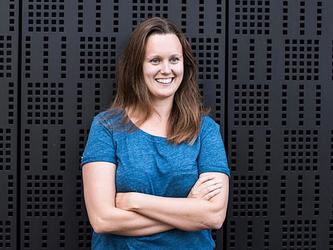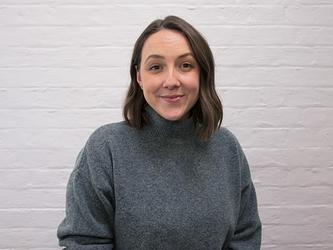A football Focus
The walk to the Football Association’s (FA’s) offices is nothing if not inspiring. Even without match-day crowds, striding along Olympic Way from the tube station, with Wembley Stadium’s majestic arch before you, is an impressive sight. It’s not a bad way to start your day.
As head of research and insight at The FA, Ross Antrobus’s offices are inside the stadium, and our interview is taking place in one of the boxes, overlooking the pitch. If Antrobus didn’t exactly live and breathe football before – he admits to being only an armchair West Ham fan – he does now.
Indeed, he has one of those roles that I suspect many a market researcher would clamour for, because – when he first joined the organisation – there was no insight division. So he has not only championed the value of insight within the business, but also built his team from scratch. And the quality and importance of the work that this group of five researchers (including himself) has done was good enough to win them Best In-house Team at last year’s MRS Research Live awards.
So it’s interesting that, although Antrobus has a degree in sports psychology, applying for the FA job was a bit of a whim, rather than a burning ambition. But with a background in FMCG market research and then marketing, at Müller – as well as agency-side retail insight jobs – he has been able to bring a specific insight rigour to the role.
“The key to being really good at insight is understanding how the organisation makes money and where it spends money. If you have a good grasp of that, it helps you frame all your work,” he says.
Now in his fourth football season, Antrobus has lived through a change of CEO – from Alex Horne, who recruited him, to Martin Glenn. So what made the FA realise it needed its own in-house research team? “It was twofold really. We were under increasing scrutiny and pressure from Sport England and the Department for Culture, Media and Sport (DCMS) as we were losing weekly participants and had no understanding of why; Sport England figures give you a measure of performance, but no diagnosis.
“The other side is Club Wembley – 18,000 seats held by about 5,500 people [individuals, companies, travel agencies]. Club Wembley seats were sold on a 10-year licence. When I joined, we were four years away from what was then our single biggest revenue source reaching the end of its tenure. Club Wembley is worth about £60m of revenue a season.
“It was a very broad brief when I joined – we need to know more about participation; we have to make sure we know everything we need to get as many people as possible to renew their Club Wembley membership; here’s some budget. My first two weeks were spent scoping out what the role and the remit of the team was, and then what those job profiles looked like.”
Since Glenn took over, more focus has shifted onto The FA’s brand image. “It’s a funny brand in that it’s well recognised and not at all understood – and I don’t think there are many brands that fit that category.”
Antrobus says that, with more traditional brands, it’s easy to understand where the brand starts and stops, but with The FA, “our brand doesn’t have any edges”.
“People know where Starbucks starts and stops. People know what we do, but it merges into what the Premier League does, what Sky Sports does, what the government does; so we lack definition. We know from work we’ve done around The FA image that we’re seen as slow and not very transparent. The previous chairman used the expression ‘pale, male and stale’.”
Antrobus identifies three things that change The FA’s brand image: “The performance of the men’s senior team; the employment status of the England manager; and how we’re seen to handle high-profile discipline issues in the professional game.”
“They’re all within our remit to some extent. But what doesn’t come through is that in the last football season we reinvested £1m a week in grassroots football,” he explains.
The FA is in the first year of a four-year strategy to rebuild itself into a world-class organisation. This year, it launched its ‘For All’ campaign, which includes two films – one featuring Casey Stoney, who has more than 100 caps for England Women, and the other starring James Blackwell, captain of the Paralympics GB team. They tell how football has affected and improved their lives.
“The more people know about us the more positively they think about us. That’s not rocket science, but I don’t think it applies as drastically to other brands as it does to us,” says Antrobus.
The choice of Stoney for one of the films is deliberate. Women’s football has been a particular focus for The FA and its ambition is to double the number of women and girls playing football by 2020 – which means going from 6,000 to 12,000 teams.
The cynic might say this is an easy way to increase participation, but Antrobus points out how challenging it is ‘to double it in four years’. Although women’s football has been around for a long time – women’s clubs existed in the 1890s, but the Women’s FA (WFA) was only affiliated with the FA in 1983.
The growing awareness of the national women’s team is certainly helping uptake, but reaching girls when they are young is vital. According to research, if a girl has not got the football habit by the time she is eight, then she’s not going to get it. “About 90% of boys over the age of six play football; with girls, it’s just below 20%. But by the time girls get to 16, that’s dropped to nearly 5%. Even with boys, it’s dropped to 66%,” Antrobus says.
The team spent time with girls playing football to help with the FA’s women and girls strategy and one of the interesting insights that came out of its qualitative work – with digital insight and strategy agency Sparkler – was around parental involvement. “A dad with a daughter is just as likely to encourage her to play football as he is with a son, but he is more likely to be involved in their football – as a coach or volunteer – with a son than a daughter. He’s no less encouraging, but he’s not particularly involved.”
This year, the insight team has also spent a lot of time working on The FA’s new football hubs, to try to understand the localised social and economic impact of football.
“Over the next five years, we are building about 150 football hubs. They have a working title of Parklife – the first one opened in Sheffield,” explains Antrobus.
With government cuts, the pressure on councils’ spending has increased and, as Sheffield didn’t have enough money to maintain and keep its football fields, The FA worked with it to find a solution.
“Rather than try to maintain grass pitches all over Sheffield, we are building three football hubs, which are centralised facilities. Regardless of which club they play for, people come to the hubs and play. It’s far more cost-effective.”
Others are following Sheffield; The FA is about to start building in Liverpool, initial stages have started in Ealing, west London, and there are expressions of interest for others across the country. “We want to learn as we go along, and understand what impact they are having on the local community,” says Antrobus.
To capture data, the hubs have one entrance. “It’s like going to the gym – everyone has to swipe in. It’s a long way from arriving two minutes before kick-off, throwing on your kit and running on,” Antrobus adds.
“We’ll know who you are and who you play for. We’ll know what games are being played, so we can start to look at your frequency of use. The cards are also used when people buy things, so we can get an idea of use of the site.
“We don’t ask for a lot of information from people, but we ask for their home postcode so we can look at catchment areas, to help us work out travel times. Then we can identify how far away from Sheffield the next hub needs to be.
“With Sport England, we are asking ‘does it help in the locality? With engaging young people in activity? Does it help with localised crime and vandalism?’ For older participants – whether it’s through walking football or small-sided football [such as five-a-side] – we are looking at what impact it is having on their health and wellbeing.”
But for all the highs of new football hubs or success for the England Lionesses, there are the lows of errant England managers – and, in 2016, The FA suffered a new low when The Guardian broke the story of historic child abuse by a football coach, which quickly escalated, with increasing numbers of victims coming forward and more clubs affected.
Initially, the research and insight team wasn’t involved, but now Antrobus is surveying safeguarding officers within footbal clubs. “The work is to understand how we can ensure even more support in place for the people who are in charge of keeping children safe in football. So when that project goes live, we will write a press release to say, ‘We are doing our market research.’ Otherwise, there is the potential for it to appear in parts of the press as ‘Worried FA officials seek to canvas opinion on safeguarding officers’.”
As well as juggling these projects, there is ongoing research work. Toluna does a monthly participation tracking study, which talks to 1,500 people in England, while more regular insight work is handled by Incite and 2CV.
But Antrobus’s team sits within the strategy and comms team, and football generates more than its fair share of news – “the only thing that generates more column inches than football is the royal family”.
“We work quite closely with the comms team. There are a lot of myths, plus hearsay and anecdotal stories in football; in many cases, we can disprove – or at least supply data and insight to debunk – some of those myths.”
The anecdotal benefits of playing football, in all its guises, may be strong, but DCMS requires data to prove its value – be it economic or social – and that will continue to keep Antrobus and his team busy.

We hope you enjoyed this article.
Research Live is published by MRS.
The Market Research Society (MRS) exists to promote and protect the research sector, showcasing how research delivers impact for businesses and government.
Members of MRS enjoy many benefits including tailoured policy guidance, discounts on training and conferences, and access to member-only content.
For example, there's an archive of winning case studies from over a decade of MRS Awards.
Find out more about the benefits of joining MRS here.















0 Comments